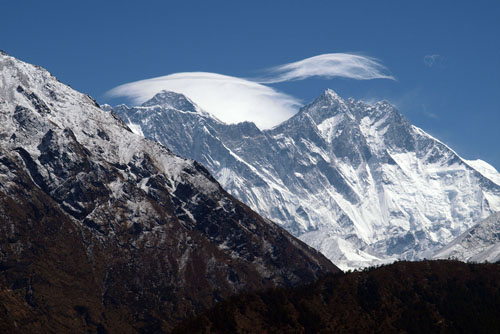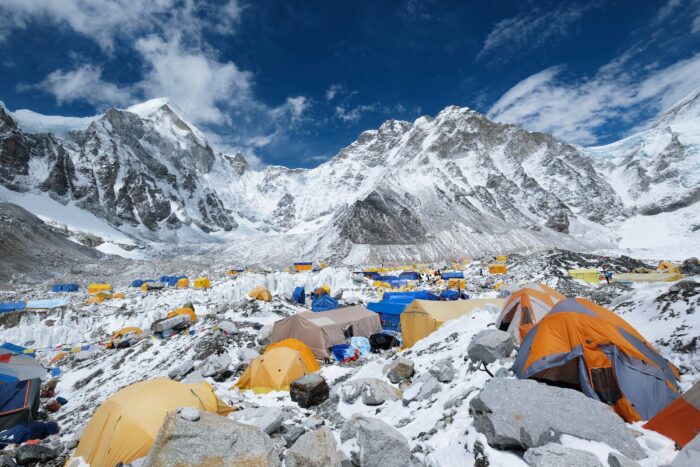The Jeep revved its engine then jerked to a stop. Men with guns were outside, guarding a checkpoint at a goldmine in Indonesia’s Maoke Mountains. There were muffled shouts. A pause. Then the Jeep was moving again. Troy Aupperle, an American mountain climber, was hidden in back. He crouched on top of his pack, concealed under a tarp. He waited for the truck to gain speed. He exhaled in relief.
It was January of 2007, and Aupperle, a small business owner from Alexandria, Minn., had hired a travel company to get him to the wilderness near Carstensz Pyramid, a remote mountain unreachable by public roads. The summit — a 16,023-foot fin of rock, the highest point in all of Oceania — was on Aupperle’s checklist as a must-climb mountain peak. “Clandestine human smuggling was not initially part of the plan,” Aupperle said.
(Click for 7 SUMMITS PHOTO GALLERY)
But Aupperle, age 44, was on a mission of sorts. Over a two year period, he attempted to set a time record for climbing the highest mountain on each continent around the globe.
He did not make his hoped-for record time, overshooting the deadline by more than a year. But last May, on a desolate perch at 29,029 feet, the veteran climber pulled off his oxygen mask and posed for a victory photo atop Mount Everest, the final peak on a continent-hoping quest that had consumed his life.
As mountaineering feats go, climbing the “seven summits” — which includes peaks in Alaska, Argentina, Russia, Nepal, Antarctica, Tanzania, and Australia or Oceania — is an ultimate accomplishment. Conceived almost 25 years ago by businessman Dick Bass, the owner of Utah’s Snowbird Ski Resort, the seven summits concept continues to fascinate. Each year a few adventurous — and mostly affluent — climbers tick off the continental circuit and are added to a growing list.
Aupperle said he spent more than $150,000 in travel expenses, permits and guiding fees. The challenge of climbing high peaks and the adventure of international travel — Jeep smuggling episodes and all — were primary draws.
continued on next page. . .









